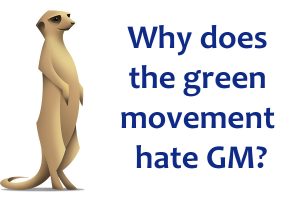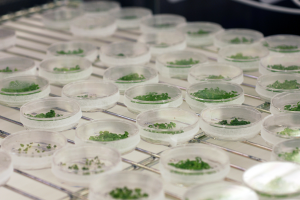When I was young, Pluto was still a planet and nine was my lucky number, so I really liked that we had nine planets in our solar system – it made it easy for me to remember. My love of astronomy out-lasted Pluto’s status as a planet, and as I write this I am actually wearing a solar system necklace; each planet is represented, yet it only has eight planets on it.
Imagine an alien. If you’ve been influenced by movies and television at all, the creature you’re picturing is probably two-legged, two-armed, bipedal and with a reminiscently human layout – head, eyes and mouth somewhere near the top. And while most of us recognise that this vision of extra-terrestrial life is a bit silly, conversations about life elsewhere in the universe are often still painfully unimaginative.
Genetically modified organisms, especially plants, get a lot of hate. People – even some very environmentally conscious people – seem to fear or hate GM crops. Yet, as someone who is very worried about climate change, very worried about the human-induced mass extinction event that is happening before our eyes, and worried about the livelihoods of farmers and about those people that have so little food they go to bed hungry every night…
This month, my friend James has written a brilliant piece exploring and (largely) debunking a lot of the common fears and complaints about genetically modified plants and crops. One of the reasons I asked him to write something on this topic is because it’s something I hear asked a lot. But it is also a topic that people seem to lump in with the general ‘green’ environmental movement – many organisations and individuals who describe themselves as being environmentalists also advocate the banning of GM products. Which seems very strange to me because as a biologist, I’ve never seen anything wrong with the concept of GM.
Continue reading →This post is available for early view by patrons. It becomes public at 2:00pm on Sunday December 15th, 2019.
It pains me to have to write a blog on this topic in 2019. I feel that at this point, people who claim they haven’t seen enough evidence that humans are changing the climate are, frankly, just not looking very hard. Plenty of people have covered this topic in the past and there are some great summaries available, at all different levels of scientific detail.
Nevertheless, this is a question I’ve found myself being asked to address repeatedly over the last few weeks and months. So I thought I would just write down my answer here instead.
Continue reading →
Humanity could vanish from the Earth right now, and our legacy would still linger for a thousand years. The world is waking to the reality of anthropogenic climate change, but that’s not the full story when it comes to how we’ve remade this planet in our image . Our obsession with plastic has flooded our environment with millions of tons of plastic waste, and every crevice of the planet is now filled with plastic fragments, small and large.
Continue reading →
Climate change is causing spring to arrive earlier in much of North America, but this advance is not happening uniformly across many bird’s migration routes.
Continue reading →
A study published in February calls into question the widely held belief that fish are stupid, by showing that they can recognise their own reflection.
Continue reading →
I’ve written before about the issues surrounding our near-limitless demand for palm oil. So you might expect I’d be applauding Iceland for promising to cut palm oil from their own-brand products from 2019 onwards – the kind of self-imposed deadline most campaigners can only dream of. And you might think I’d be up in arms about the ban that has stopped their beautiful and heartbreaking advert from reaching millions. And you’d be partly, but not completely, right.
Continue reading →
As we all know, natural automatically means good. Nothing in nature has ever hurt anyone, ever.
In the first part of my series deconstructing the term ‘natural’, I talk genetically modified organisms and domestication, and ask what is really natural, anyway?
Continue reading →
Virtually all mammals wisely choose to avoid eating chilli peppers and other foods that taste ‘hot’. New research shows that Chinese tree shrews have evolved to eat large quantities of chillies in their diet by tuning down their taste buds to the chemical that makes these foods spicy.
Continue reading →
Ticks feed on the blood of vertebrates, but this diet is low in B vitamins, which are vital for cellular metabolism. A study published earlier this year shows that African soft ticks (Ornithodoros moubata) supplement their diet with vitamin B from bacterial symbionts.
Continue reading →
Parasites are thought to diversify with their host species, but the theory has rarely been tested. Kevin Johnson at the University of Illinois and his colleagues sequenced the genomes of 46 species of lice that parasitise birds or mammals, and two non-parasitic bark lice, and constructed an evolutionary tree. They estimated that parasitic lice first emerged between 90 and 100 million years ago, but didn’t begin to diversify until 66 million years ago – around the time of the dinosaurs’ extinction.
Continue reading →
All content is Copyright © 2009 - 2019 Claire Asher













